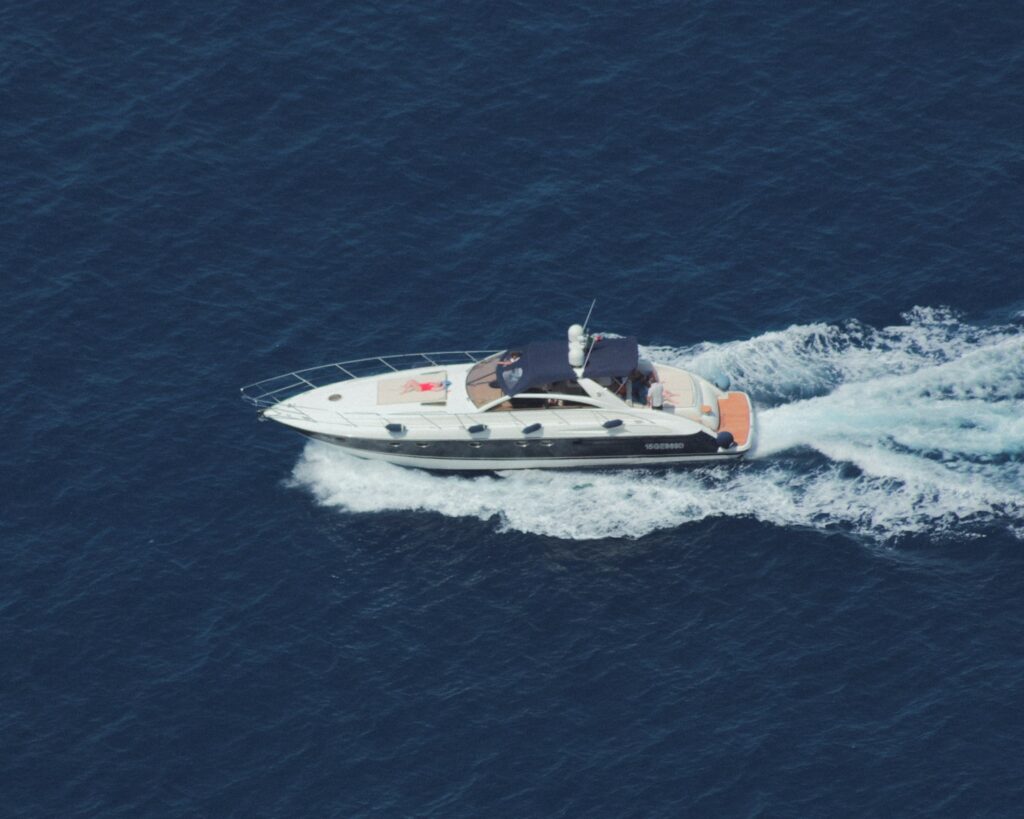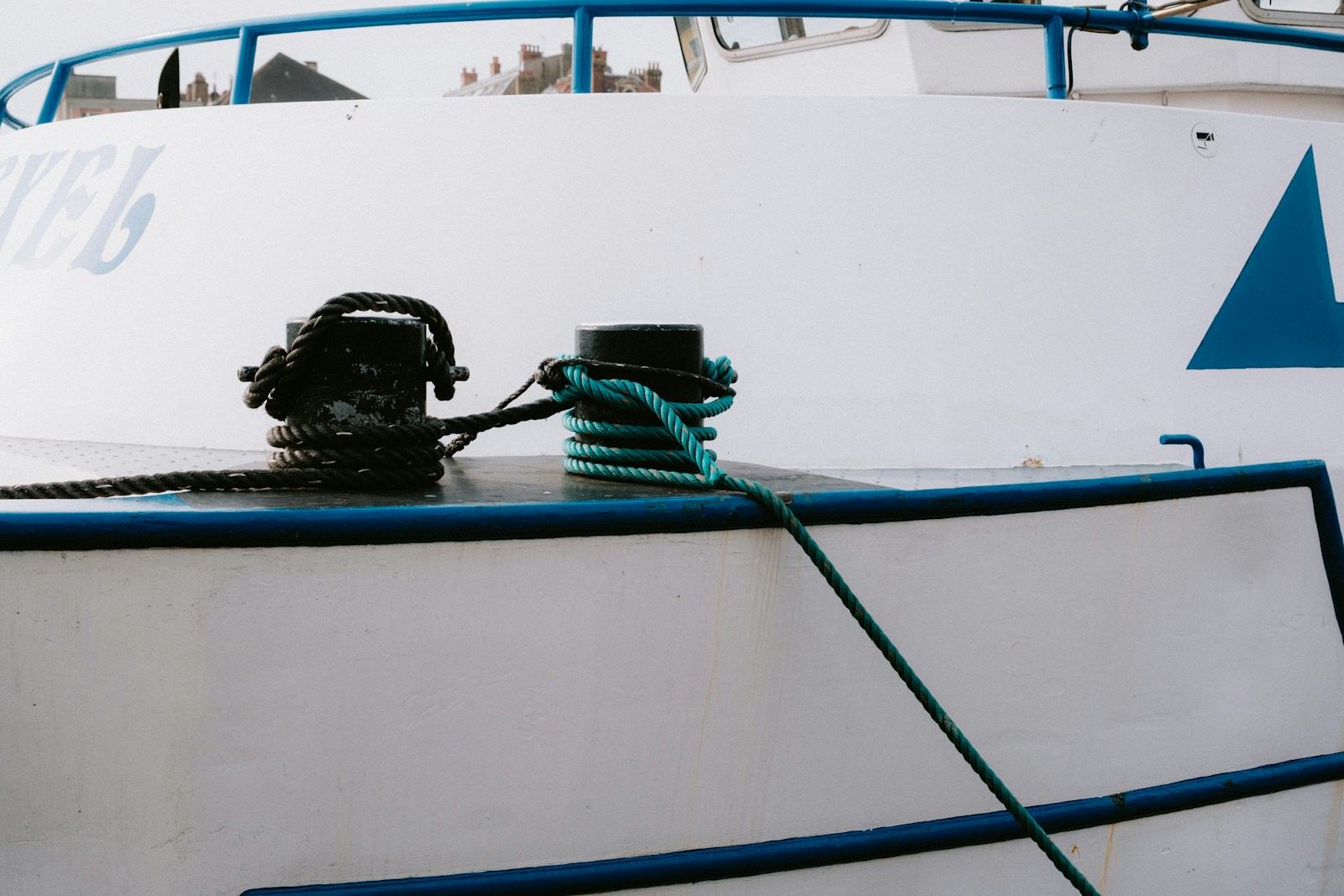Picking the right battery for your boat is crucial for ensuring optimal performance and longevity. Using the right charger is equally important to maintain battery health and performance. Whether you’re starting your boat’s engine, running onboard electronics, or powering a trolling motor, understanding the different types of boat batteries and their specific features will save you time, money, and frustration.
This comprehensive guide covers the types of marine batteries, key features to consider, and practical advice to help you make the perfect choice for your boating needs.

Understanding Boat Battery Types
Marine batteries are specifically designed to withstand the unique challenges of boating—extreme vibrations, higher temperatures, and frequent use. Here are the three main types of boat batteries and their key characteristics:
Cranking Batteries
Cranking batteries, also known as starting batteries, are designed for short, high-current applications like starting your boat’s engine.
- Cold Cranking Amps (CCA): These batteries have a high CCA rating, critical for quick ignition, especially in colder temperatures.
- Not for Deep Cycle Use: They are not suited for powering onboard electronics or trolling motors over long periods.
- Shorter Lifespan: Cranking batteries typically have a shorter lifespan compared to other types.
- When to Use: Ideal if you only need a battery to start your engine before switching to another power source.
Deep Cycle Batteries
Deep cycle batteries are the backbone of heavy-duty marine power needs. Unlike cranking batteries, they’re designed to handle continuous use over long periods.
- Durability: These batteries can be deeply discharged and recharged multiple times, making them perfect for running trolling motors, onboard electronics, or even accessories like refrigerators.
- Lower CCA Rating: Deep cycle batteries tend to have a lower CCA rating, so they’re not ideal for starting engines.
- Applications: Commonly used in recreational vehicles like boats and golf carts.
- When to Use: Ideal for continuous use when powering electronics or accessories.
Dual Purpose Batteries
Dual purpose batteries combine features of both cranking and deep cycle batteries, offering versatility for boat owners with varied power needs.
- Balanced Features: These batteries provide solid engine starting power and can also handle moderate deep cycle applications.
- Moderate CCA Rating: While not as powerful at ignition as cranking batteries, they offer enough starting power for most boats.
- Longevity: Dual purpose batteries usually have a longer lifespan compared to cranking-only batteries.
- When to Use: Perfect for boats with limited space that require both starting and deep cycle power from one battery.

Boat Battery Technologies
Now that you know the types of marine batteries, understanding their technologies can help you further narrow your options.
Lead-Acid Batteries
The most commonly used and affordable marine battery type.
- Price: Low upfront cost makes them ideal for those on a tighter budget.
- Maintenance Needed: These batteries often require routine checks to ensure proper water levels and avoid potential leakage.
- Lifespan: Typically shorter than other technologies.
- When to Use: Suitable for boats with low power requirements and those who don’t mind regular maintenance.
AGM Batteries
Absorbed Glass Mat (AGM) batteries are a maintenance-free alternative to traditional lead-acid batteries.
- Maintenance-Free: Unlike lead-acid batteries, AGM batteries are spill-proof and require zero upkeep.
- Longevity: They have a longer lifespan and charge faster but come with a higher upfront cost.
- Durability: Ideal for boats exposed to rough water conditions as they are vibration-resistant.
- When to Use: Perfect for boats with moderate power needs and limited space.
Lithium Batteries
Lithium batteries are the premium choice for boaters looking for exceptional performance and longevity.
- Lightweight: They weigh significantly less than traditional options, making them ideal for high-performance boats.
- Efficiency: Deliver higher capacity and faster charging times than AGM or lead-acid options.
- When to Use: Best for enthusiasts who prioritize performance and are ready to invest in long-term value.
Key Considerations for Choosing a Marine Battery
When selecting a boat battery, there are some essential factors to keep in mind to ensure compatibility and optimal performance.
Battery Life
- Lifespan: Look for batteries with a high number of charge cycles for a longer-lasting power source.
- Warranty: A strong manufacturer warranty can provide added peace of mind.
Battery Size and Group Number
- Compatibility: Check the size and group number to make sure your new battery will fit your boat’s existing compartment and electrical system.
- High CCA: Aim for a high CCA rating combined with a moderate Reserve Capacity (RC) to ensure your battery performs well under varying conditions.
Cold Cranking Amps (CCA) and Marine Cranking Amps (MCA)
When selecting a marine battery, understanding Cold Cranking Amps (CCA) and Marine Cranking Amps (MCA) is crucial. CCA measures a battery’s ability to start an engine in cold temperatures, specifically at 0°F (-18°C) for 30 seconds without the voltage dropping below 7.2 volts. This metric is essential for ensuring your battery can crank over your engine in harsh winter conditions. On the other hand, MCA is measured at 32°F (0°C), resulting in higher numbers compared to CCA. MCA is particularly useful for boat owners operating in milder climates.
Both CCA and MCA are vital for determining a battery’s starting power, especially for large engines, diesel engines, and high-compression gas engines. A higher CCA or MCA rating means your battery can deliver the necessary power to start your engine reliably, even in challenging conditions. When choosing a marine battery, consider the typical operating temperatures and the specific power requirements of your boat’s engine to ensure optimal performance.
Advanced Features
-
Battery Management Systems (BMS): Features like overcharge protection, short-circuit prevention, and temperature monitoring can significantly enhance battery performance and safety.
-
Certifications: Look for recognized certifications (e.g., UL, CE) to ensure the battery meets industry safety standards.

Additional Features to Consider
When choosing a marine battery, there are several additional features to consider beyond the basics of battery type, size, and CCA/MCA ratings. These features can significantly impact the performance, safety, and longevity of your battery, making them essential considerations for any boat owner.
Advanced Battery Management Systems
Advanced Battery Management Systems (BMS) are designed to optimize battery performance, safety, and lifespan. A BMS monitors the battery’s state of charge, voltage, and temperature, providing real-time data to help you manage your power needs effectively. Additionally, a BMS offers critical safety features such as overcharge protection, short-circuit protection, and cell balancing, which can prevent potential damage and extend the life of your battery.
Look for a marine battery with a built-in BMS or consider adding a separate BMS unit to your boat’s electrical system. This investment can provide peace of mind, knowing that your battery is operating safely and efficiently, even under demanding conditions.
Safety Features and Certifications
Safety features and certifications are essential for ensuring the reliability and safety of your marine battery. Look for batteries that have been certified by recognized organizations such as the American Boat and Yacht Council (ABYC) or the International Electrotechnical Commission (IEC). These certifications indicate that the battery meets stringent safety and performance standards.
In addition to certifications, consider batteries with built-in safety features such as explosion-proof designs, thermal runaway protection, and secure terminal connections. These features can prevent accidents and ensure that your battery operates safely, even in challenging marine environments.

Installation and Setup
Typical Boat Battery Setups
The type and number of batteries needed for a boat can vary depending on the size and type of vessel, as well as the electrical load requirements. Here are some common boat battery setups:
- Single Battery Setup: Ideal for small boats with minimal electrical needs, a single battery setup typically uses a dual purpose battery to handle both starting the engine and powering basic electronics.
- Dual Battery Setup: Common in medium-sized boats, this setup uses separate cranking and deep cycle batteries. The cranking battery starts the engine, while the deep cycle battery powers electronics and accessories.
- Multiple Battery Banks: Larger boats with extensive electrical systems often use multiple battery banks. This setup can include several deep cycle batteries for powering various systems and a dedicated cranking battery for each engine.
Choosing the right battery setup depends on your boat’s size, power requirements, and intended use. By understanding your specific needs, you can ensure that your boat is equipped with a reliable and efficient power source.
Professional Installation
Neglecting the installation process can lead to performance issues or even damage. If you’re unsure, hire a professional installer to set up your battery system properly.
Manufacturer Support
Choose brands that offer comprehensive installation guides or customer service to help you through the process.
Maintenance Tips
- Prevent Corrosion: Use anti-corrosion sprays on boat battery terminals.
- Regular Checks: Periodically check for signs of leakage, damage, or loose cables.
- Keep It Charged: Always ensure your boat battery is fully charged to prolong its life.
- Avoid Dead Battery: Regularly check your boat battery to avoid a dead battery, which can ruin your day out on the water. Consider advanced lithium batteries to mitigate this problem.
Choose the Right Boat Battery for Your Needs
By understanding your boat’s power requirements and being mindful of your budget, choosing the right battery becomes a straightforward task. Whether you go for a cranking battery, a deep cycle battery, or an AGM alternative, focusing on your specific needs will ensure optimal performance for years to come.
Looking for a marine battery to keep you fully powered on the water? Reach out to the experts or visit a trusted retailer to stock up on high-quality batteries built for longevity and performance.

Interstate Haulers – Reliable Transport for Your Boating Needs
When it comes to transporting your boat safely and efficiently, Interstate Haulers is a trusted name in the industry. Specializing in professional boat transport, Interstate Haulers ensures that your watercraft is handled with care and attention to detail. Whether you’re moving your boat across states or just a few miles, their experienced team offers customized solutions tailored to your requirements.
With their commitment to quality service, Interstate Haulers uses state-of-the-art equipment and follows meticulous safety protocols to guarantee your boat arrives at its destination in perfect condition. To learn more about their trusted boat transportation services, visit Interstate Haulers and experience a seamless transport process for your prized watercraft.



